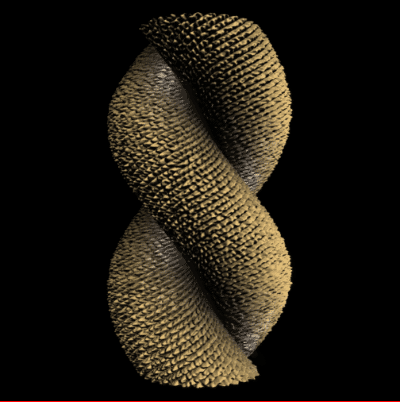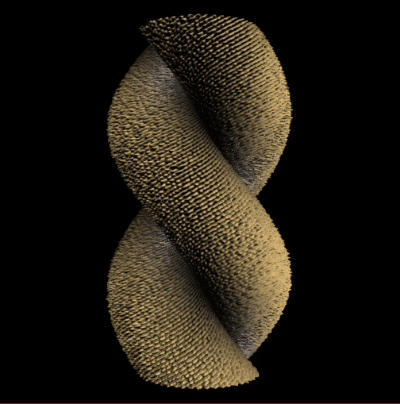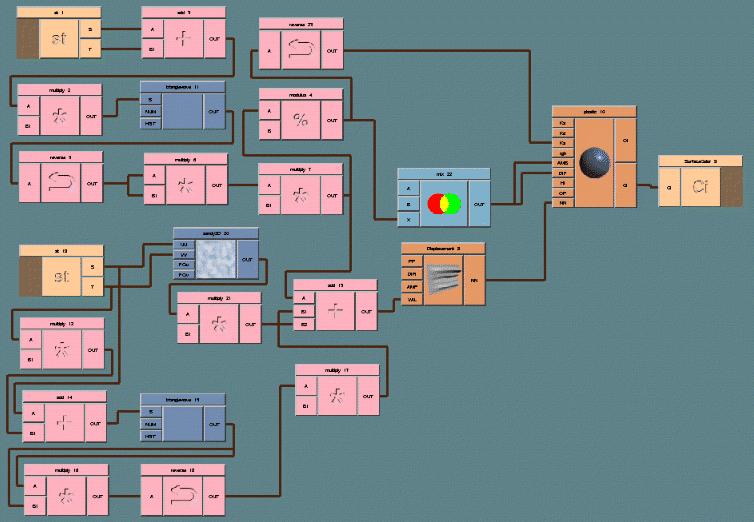 'FIBER FREQ' set at default 48.
'FIBER FREQ' set at default 48.
 'FIBER FREQ' increased to 80.
'FIBER FREQ' increased to 80.

 The following controls come up by default to change the strand frequency,
fiber frequency, and fiber roughness, as the slider comments indicate:
The following controls come up by default to change the strand frequency,
fiber frequency, and fiber roughness, as the slider comments indicate:
 Shown below is the same rope shader, with the fiber frequency increased from
48 to 80, resulting in a 'higher grade' rope that has finer fibers:
Shown below is the same rope shader, with the fiber frequency increased from
48 to 80, resulting in a 'higher grade' rope that has finer fibers:
 'FIBER FREQ' set at default 48.
'FIBER FREQ' set at default 48.
|
 'FIBER FREQ' increased to 80.
'FIBER FREQ' increased to 80.
|

Copyright (c) 1996 Cinema Graphics Inc. All Rights reserved.